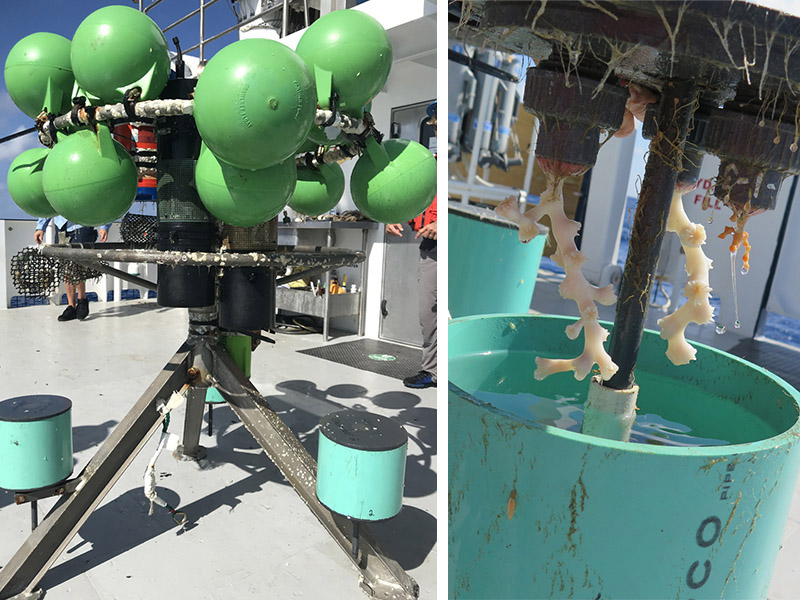Exploration and Characterization of the Fine-Scale Physical-Biogeochemical Environment Over Deep Coral Reefs on the West Florida Slope Using Integrated Remotely Operated Vehicle-Lander-Sensor Systems
Past Expedition
Overview
To understand how deep-sea corals respond to changes in ocean conditions such as ocean warming, deoxygenation, and acidification, scientists from the Woods Hole Oceanographic Institution, Harbor Branch Oceanographic Institution, Florida State University, and Florida Atlantic University carried out two expeditions on Research Vessel (R/V) Point Sur in October 2019 and on R/V Hogarth in September 2020. In total, they conducted five remotely operated vehicle (ROV) dives with ROV Global Explorer across deep coral mounds on the West Florida Slope of the Gulf of Mexico.

Download largest version (jpg, 632 KB).

Download largest version (jpg, 4.82 MB).

Download largest version (jpg, 1.24 MB).
The typical methods for studying ocean chemistry and physical properties do not capture small-scale changes happening over space and time. To overcome such technical limitations, the project team outfitted a new sensor technology known as CHANnelized Optical System II (CHANOS II) to the ROV and were able to measure fine-scale features of dissolved inorganic carbon and other biogeochemical parameters (e.g., pH and dissolved oxygen) in situ at deep water coral habitats.
The team also deployed benthic landers equipped with sensors to measure water temperature, currents, pH, and partial pressure of carbon dioxide, every 15 minutes for 11 months. They compared the types and number of coral and sponge species between different sites to see what physical and chemical properties might influence their community compositions over time and space.
The project team demonstrated an advanced way to explore and characterize deep coral reefs and seawater carbonate chemistry in their surrounding environments with refined observational scales. Through the deployments of the CHANOS II and the integrated lander-sensor systems, the team examined how the fine-scale spatial and previously unobserved temporal variability of physical and chemical conditions influence the biology and physiology of benthic coral communities and habitats.
This project has resulted in important insights into the long-term effects of climate change on fine-scale oceanographic processes impacting deep coral communities. Such findings will facilitate our projection of the fate of deep coral reefs under human pressure and assist in the planning of effective coral management and protection.
Various research data collected during the expedition, from water samples to visual survey recordings, are archived at the National Centers for Environmental Information and accessible to the public. Coral distribution data derived from ROV video analysis were also submitted to NOAA Ocean Exploration and included in the NOAA Deep-Sea Coral Data Portal.
Contributed by Liang Wu, NOAA Ocean Exploration
